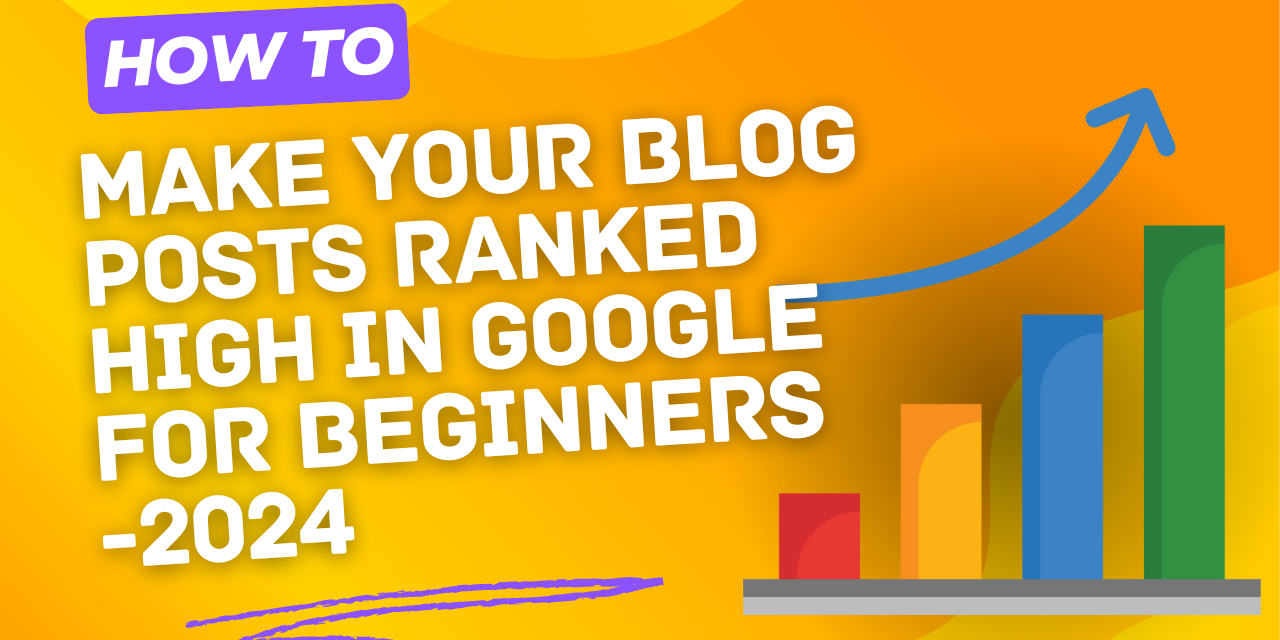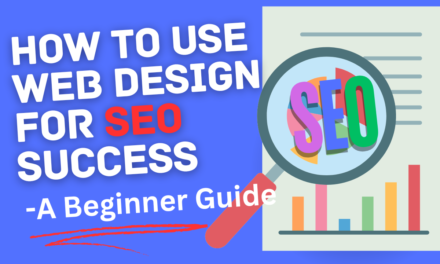The Struggle Every Blogger Faces
Imagine this scenario: You’ve spent hours, maybe even days, crafting a blog post you believe is your best work yet. You’ve poured your knowledge, experience, and creativity into it, and you’re convinced it will resonate with your audience. You hit the publish button, expecting an influx of readers, but instead, you hear crickets. Days pass, and the traffic is trickling in. It’s frustrating, isn’t it? This situation is all too familiar for many bloggers.
The truth is, creating excellent content is just the first step. To ensure your hard work doesn’t go unnoticed, you need to make sure your blog post is optimized to rank higher in Google. This guide will walk you through actionable strategies to help your blog posts rise in search engine rankings and attract the audience they deserve.
The Power of Storytelling
Before diving into the technical aspects of SEO, let’s talk about the magic of storytelling. Stories aren’t just for novels or movies; they’re a powerful tool in content creation. A study by Stanford University found that when facts are presented in a narrative format, they are 22 times more likely to be remembered. When you start your blog post with a compelling story, you grab your readers’ attention and keep them engaged.
Why Stories Work
Stories evoke emotions, making your content relatable and memorable. When readers connect with your story, they are more likely to continue reading, share your post, and return for more. So, when you’re crafting your next blog post, think about how you can weave a narrative that resonates with your audience.
Using Facts and Figures to Boost Credibility
To enhance your blog post’s credibility and interest, incorporate relevant statistics and research findings. Readers and search engines alike value content that is well-researched and backed by data.
Tips for Incorporating Data:
- Use Current Data: Ensure your statistics are up-to-date and relevant to your topic.
- Cite Credible Sources: Refer to reputable studies, surveys, and reports to back up your claims.
- Visualize Data: Use charts, graphs, and infographics to make the data more digestible and engaging.
For example, consider this: “Did you know that 70% of marketers actively invest in content marketing? Furthermore, businesses that blog receive 97% more links to their website than those that don’t. These statistics highlight the immense potential of blogging in driving traffic and engagement.”
Crafting SEO-Friendly Content
Search Engine Optimization (SEO) is the backbone of getting your blog posts ranked higher in Google. It’s not just about inserting keywords; it’s about creating content that search engines love while also providing value to your readers.
Keyword Research
The first step in crafting SEO-friendly content is thorough keyword research. Identify relevant keywords that your audience is searching for. Tools like Google Keyword Planner, Ahrefs, and SEMrush can help you discover keywords with high search volume and low competition.
Once you have your keywords, incorporate them naturally into your content, including in your title, headers, and throughout the body of the post. Avoid keyword stuffing, as it can harm your ranking and make your content less readable.
Meta Descriptions
Your meta description is the brief snippet that appears under your blog post title in search engine results. Although it’s not a direct ranking factor, a well-crafted meta description can significantly impact your click-through rate.
- Include Your Main Keyword: Ensure your primary keyword appears in the meta description.
- Keep It Concise: Aim for 150-160 characters to ensure the entire description is visible in search results.
- Make It Compelling: Use action-oriented language to encourage users to click on your post.
Header Tags (H1, H2, H3)
Header tags help structure your content, making it easier for both readers and search engines to understand. Use H1 tags for your main title, H2 tags for subheadings, and H3 tags for further subdivisions within your post. Incorporating keywords in these tags can also enhance your SEO.
Internal and External Links
Linking to other relevant articles on your site (internal links) and reputable external sources (external links) is a crucial aspect of SEO. Internal links help search engines understand the structure of your site and keep readers engaged by guiding them to related content. External links to high-authority sites can boost your credibility and SEO.
Writing for Your Audience
Understanding your audience is key to writing content that ranks well and resonates with readers. Tailor your content to address their needs, problems, and interests.
Tips for Audience Engagement:
- Ask Questions: Encourage readers to engage by asking questions throughout your post.
- Use a Conversational Tone: Write as if you’re having a one-on-one conversation with your reader.
- Include a Call to Action (CTA): Encourage your readers to take action, whether it’s leaving a comment, sharing the post, or subscribing to your newsletter.
Making Every Word Count
In the vast sea of online content, every word matters. To keep your readers engaged and improve your SEO, ensure that each sentence adds value and stays on topic.
Strategies to Make Every Word Count:
- Edit Ruthlessly: Cut out any fluff or redundant information.
- Stay Focused: Keep your content tightly focused on the main topic.
- Use Subheadings: Break up the text with clear and informative subheadings to improve readability and SEO.
Enhancing Visual Appeal
A visually appealing blog post is more likely to hold readers’ interest and encourage them to stay on your page longer, which can positively impact your SEO.
Tips for Enhancing Visual Appeal:
- Use High-Quality Images: Incorporate relevant and high-resolution images to complement your content.
- Break Up Text: Use bullet points, numbered lists, and short paragraphs to make your content more digestible.
- Consistent Formatting: Maintain a consistent style and formatting throughout the post.
Additional Key Elements to Boost Your SEO
While the strategies mentioned above are crucial, there are additional elements that can further enhance your blog post’s ranking potential.
1. High-Quality Content
Quality is king when it comes to content. Google prioritizes content that is informative, engaging, and meets the needs of the audience. Focus on creating long-form, well-researched articles that target specific keywords naturally. Your content should provide real value, answer users’ queries effectively, and be free of errors.
2. On-Page SEO
On-page SEO involves optimizing individual pages on your site to rank higher. This includes:
- Title Tags: Make sure your title tags are concise, descriptive, and include your primary keywords.
- Meta Descriptions: Craft compelling meta descriptions that encourage clicks.
- Header Tags: Structure your content with H1, H2, and H3 tags.
- Alt Text for Images: Use relevant keywords in the alt text of images to improve accessibility and SEO.
3. Mobile Optimization
With Google’s mobile-first indexing, your site must be optimized for mobile devices. Use responsive design principles to ensure a seamless user experience across all devices, as a significant portion of web traffic now comes from mobile.
4. Site Speed and Core Web Vitals
Fast loading times and a smooth user experience are critical for ranking and user retention. Optimize images, use a Content Delivery Network (CDN), minimize JavaScript, and improve server response times to meet Google’s Core Web Vitals, which include metrics like Largest Contentful Paint (LCP), First Input Delay (FID), and Cumulative Layout Shift (CLS).
5. Technical SEO
Technical SEO ensures that search engines can easily crawl and index your site. This includes improving site architecture, fixing broken links, creating an XML sitemap, ensuring proper use of robots.txt, and optimizing URL structures. A technically sound website is the foundation of strong SEO performance.
6. Backlinks
Backlinks from authoritative websites signal to search engines that your content is credible and valuable. Engage in content marketing, guest blogging, and outreach to build a strong backlink profile. The more high-quality backlinks you have, the more authority your site will gain in the eyes of search engines.
7. User Experience (UX)
A positive user experience leads to higher engagement and lower bounce rates, both of which positively impact SEO. Focus on intuitive navigation, clear calls to action, and a clean, user-friendly design to enhance UX.
8. Keyword Optimization
While keyword stuffing is penalized, strategically placed keywords that align with user intent are still vital. Use keywords naturally within your content, including long-tail keywords that match specific user queries. This not only improves your SEO but also ensures your content is relevant to your audience.
9. Content Freshness
Regularly updated content signals to search engines that your site is active and relevant. Update old content, add new information, and refresh meta tags to keep your content current. Fresh content can give your blog posts a ranking boost and attract more traffic.
10. Schema Markup
Adding structured data (schema markup) helps search engines better understand your content and can improve the visibility of your site in rich snippets. Implement schema markup for reviews, articles, products, and other content types to enhance your appearance on SERPs (Search Engine Results Pages).
11. Social Signals
While social signals are not a direct ranking factor, they can indirectly impact SEO. Promote your content on social media platforms to drive traffic and engagement, leading to potential backlinks and improved ranking. The more your content is shared and discussed, the more likely it is to gain visibility and authority.
Conclusion
Ranking higher on Google is a multifaceted challenge, but it’s one that can be met with the right strategies. From the power of storytelling and the importance of high-quality content to technical SEO and the impact of user experience, there are numerous ways to improve your blog’s visibility and attract more readers.
Remember, SEO is an ongoing process. Continuously update your content, stay informed about the latest SEO trends, and always focus on providing value to your audience. By implementing the strategies outlined in this guide, you can increase your chances of seeing your blog posts rise to the top of search engine results, bringing in the traffic and engagement your content deserves.
Watch the video on our Youtube instead. Click Here










